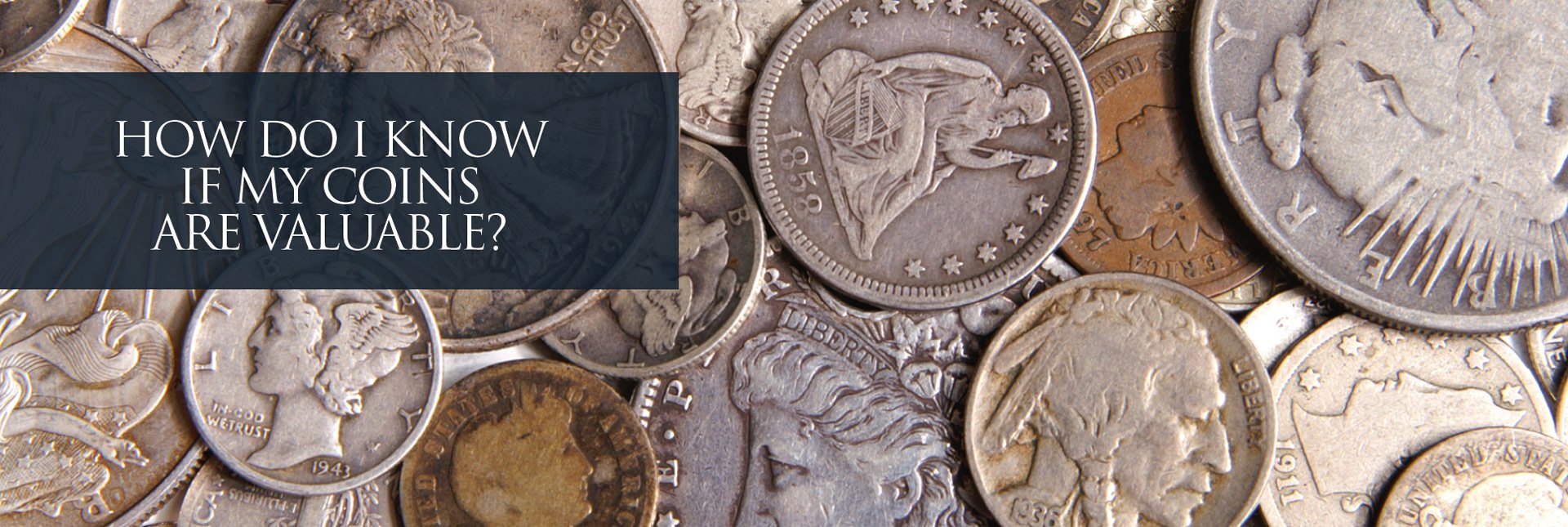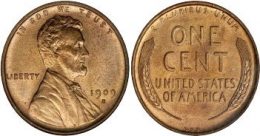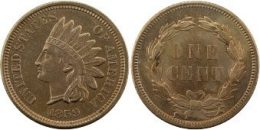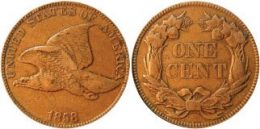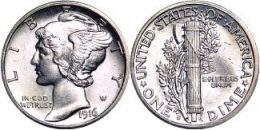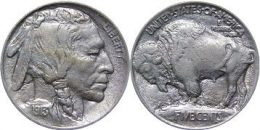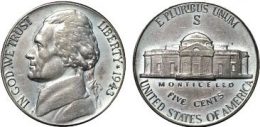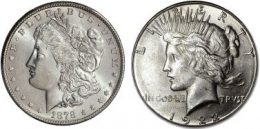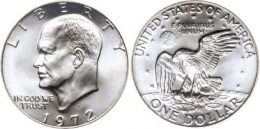We have created a quick reference guide to help distinguish rare coins from regular spending money worth face value. We believe the best way to sell your coins is to arm yourself with knowledge. This helpful guide is designed to help you prepare your coins for appraisal, collecting, or to sell. Once you go through these steps, you are ready to schedule your appointment!
MAKING SENSE OF APPRAISING YOUR CENTS

First, If possible, separate your coinage by placing like coins with like coins. This allows us to evaluate the coins quicker as well as helps us find key dates and coins that may be more valuable than others.
Secondly, NEVER clean your coins before bringing them in for appraisal; this could take away from the value of the coin. In the coin industry, it’s best to let a coin stay in its natural state; a simple cleaning can wreak terrible damage to a coin and permanently alter its natural appearance.
Finally, DO NOT remove coins from an album that were assembled by a collector. Coins that were placed in an album may have a greater chance of being worth more, so keep them intact until a professional dealer can review them.
Once your coins are separated, call us at 713-464-6868 to set up an appointment with our specialists!
What coins are actually made of silver?
In the United States, coins that contain silver and used in widespread circulation are dimes, quarters, half-dollars, and dollars minted before 1965. These pre-1965 coins contain 90% silver. If you look at the edge, they will look silver all the way through.
90% SILVER COINS
Coins from 1964 and older in values of 10¢, 25¢ and 50¢ contain 90% silver content. Everything minted after 1964 in 10¢ and 25¢ is worth face value.
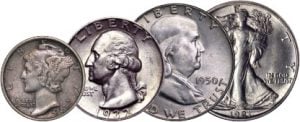
40% SILVER COINS
Half dollar coins from 1965 through 1970 contain 40% silver. This is ONLY in 50¢, everything other coins after 1970 in 50¢ is worth its face value.
Kennedy Half-Dollars minted 1965–1970, and 1976, as well as Eisenhower Silver Dollars minted in the years 1971-1974, and 1976.

Why do my silver coins have brown or copper on the edge?
The Coinage Act of 1965 removed silver from new circulating coins. If you look at the edge of a quarter released after 1964, you can see a copper stripe in the middle. Modern dimes, quarters, and half-dollars are made of copper and nickel. So, a good way to figure out if a coin is worth face value would be to look at the edge of the coin. If the coin’s edge has brown or copper showing, it is worth face value.
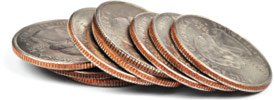
Identifying specific coins
Click on the coin to enlarge for details
WHEAT CENTS
Valuable dates are from 1909 through 1958. Memorial Cents (picturing the Lincoln Memorial on the reverse) from 1959 to current are worth face value.
Most valuable dates include: 1909-S, 1909-S VBD, 1914 D, 1922 No “D”, 1931-S, 1955 Double Die
INDIAN CENTS
These coins were minted from 1859 through 1909. The coin represents Liberty wearing an Indian headdress, not an actual Indian.
Most valuable dates include: 1877, 1864 (L on Ribbon), 1909S and 1879
FLYING EAGLE CENTS
The Flying Eagle Cent was our first small-size cent and minted from 1856 through 1858.
Most valuable dates include: 1916 D, 1921, 1921 D, 1941 and 1942
MERCURY DIMES
These coins were minted from 1916 through 1945. This coin is also referred to as the “Winged Liberty Head” dime.
Most valuable dates include: 1916 D, 1921, 1921 D, 1941 and 1942
LIBERTY “V” NICKEL
Easily recognized by the large “V” on its reverse side, this nickel was minted from 1883 through 1912.
Most valuable dates include:
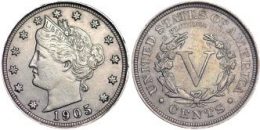
BUFFALO NICKEL
These coins were minted from 1913 through 1938. You can sort them by no date visible, partial date visible, and full date visible.
Most valuable dates include:
WAR NICKELS
These Jefferson nickels were minted from 1942 through 1945 and are 35% silver. They picture a letter on top of the capitol building.
All other dates are face value.
SILVER DOLLARS
Only Silver Dollars dated 1935 and older contain silver; they would include Morgan Dollars and Peace Dollars.
Most valuable: Any Carson City Dollars, marked with “CC” above the word dollar.
EISENHOWER (IKE) DOLLARS
40% Silver Ike’s typically come in sets. These coins are most commonly found in brown presentation boxes or blue envelopes, as pictured below.

HELPFUL VIDEOS
U.S. Coins professionals talk about coins, coin collecting, and coins values with some inside tips.
Ever wonder about how a coin is designed? We have a quick video explaining the anatomy of a U.S. Coin.
MORE HELPFUL REFERENCE MATERIALS
Coin grading standards were adopted in the 1970s by the ANA from the first coin grading scale called “the Sheldon scale,” which was used for Large Cents…
Learn More
Grading—also called certifying, slabbing, holdering, rating, or encapsulating—is when an independent third party views a coin in-person and gives it a numerical grade…
Learn More
Find out if your coins are valuable with this handy downloadable reference guide that helps you quickly identify rare coins and helps you prepare your coins for appraising and/or selling.
Go to Blog now
Have a coin question? Feel free to contact our store or read this useful question and answer section that includes commonly asked questions…
Learn More
Understanding Coin Terminology. We’ve compiled some basic terms and knowledge to help you gain a greater understanding of the coin market…
Learn More
Interested in Coin history? Read our coin blog that is filled with the rich history of our coins, fun stories, and historic facts.
Go to Blog now

